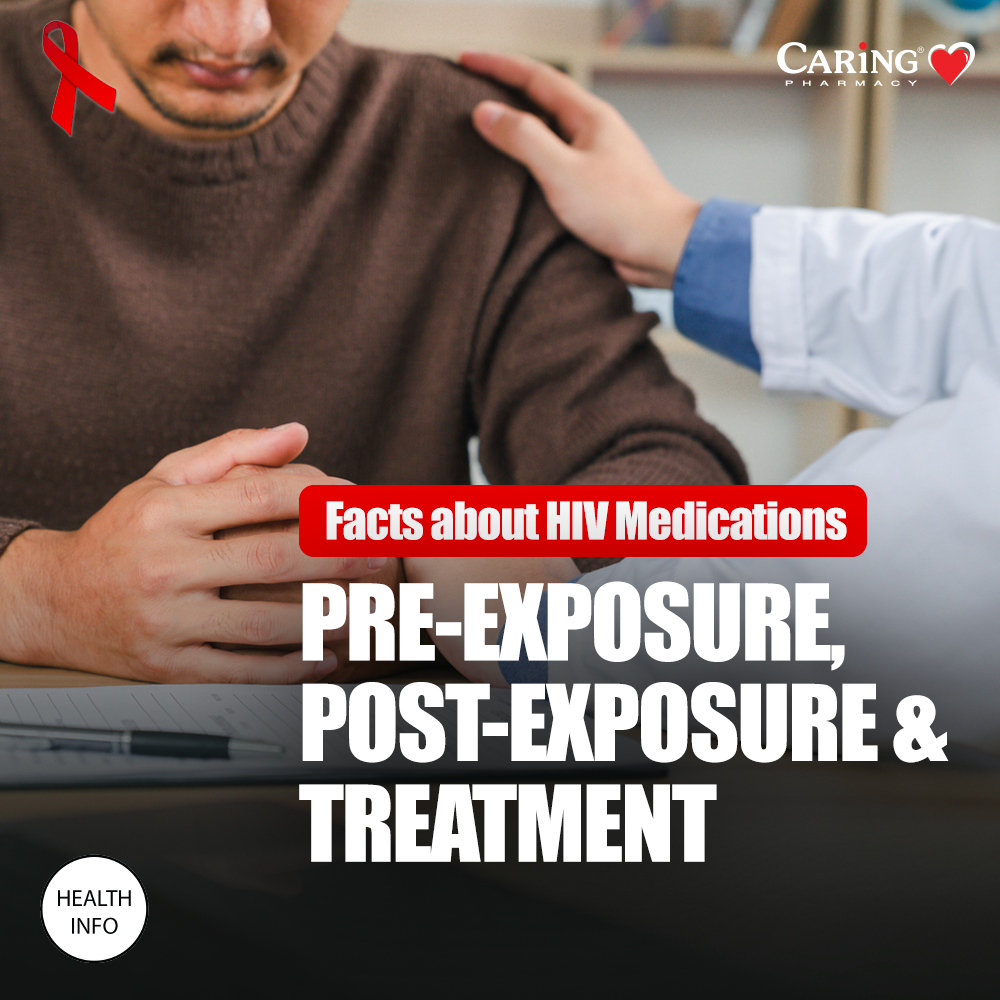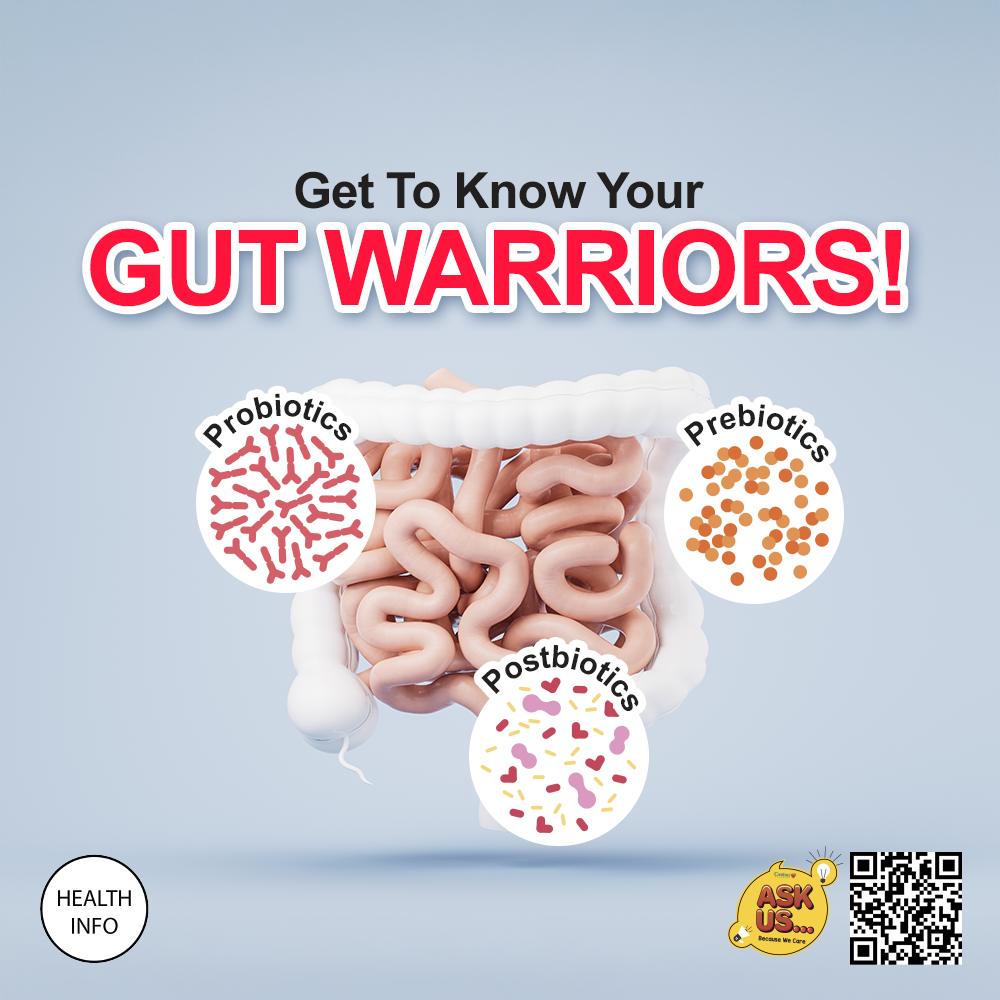- Home
- Health Center
- Health Info
- Facts about HIV Medications: Pre-exposure, Post-Exposure & Treatment
Facts about HIV Medications: Pre-exposure, Post-Exposure & Treatment


HIV (human immunodeficiency virus) is a retrovirus that attacks the body’s immune system and is transmitted by a HIV-positive person through sex, sharing needles, perinatal transmission (from mother to child during pregnancy or childbirth) and breast-feeding.1 It can lead to AIDS (acquired immunodeficiency syndrome) if HIV is not treated in time.2 Once a person gets HIV, they will live with it for the rest of their life because currently there is still no treatment to fully cure AIDS. But by getting proper medical care, HIV can be managed.
With medical advancement and research over the years, the discovery of Antiretroviral Therapy (ART) is currently used in HIV prevention and management. Pre-exposure prophylaxis (PrEP) and post-exposure prophylaxis (PEP) are available for high risk people that are HIV-negative. If a person did not receive HIV prevention medicine in time and contracted HIV as a result, all hope is not lost. There is HIV treatment as prevention (TaSP) available to manage it.1,2
Pre-exposure Prophylaxis (PrEP)
PrEP is a combination of medications used to prevent a HIV-negative person from getting HIV. PrEP should be considered in HIV-negative individuals who are sexually active in the last 6 months with a HIV-positive partner, those that don’t practice safe sex (condomless sex), has a history of sexually transmitted disease (STD) in the last 6 months, or those that share needles.3,4 Depending on the situation and patient’s needs, there are different dosing methods for PrEP: daily dosing or event driven (2-1-1).5
Post-exposure Prophylaxis (PEP)
PEP is a short course of medications that is to be taken by a HIV-negative person within 72 hours of possible exposure to HIV. Once on PEP, the person will have to take it daily for 28 days and practice HIV prevention such as using condoms during sex. After completing PEP, the person will have to go back to the doctor for follow up and HIV testing to make sure that the PEP works. If the result came back as HIV negative, the person will have to come back after 3 months from last exposure to do another HIV test for the final HIV status confirmation.6,7,8
Treatment as Prevention (TasP)
TasP should be started as soon as a person is diagnosed with HIV. ART helps to suppress the viral load (amount of HIV in blood) to an undetectable level that makes HIV untransmittable to others through sex.2 That is where the “U=U” concept comes from, which means “Undetectable = Untransmittable”. Though not fully, it can also greatly reduce the transmission of HIV through needle sharing and perinatal transmission9
TasP is a lifelong treatment that is effective when the HIV-positive person compliantly takes HIV medicine exactly as prescribed by the doctor and does regular follow-up, including routine viral load tests to ensure their viral load stays undetectable. By doing so, patients can live long, normal and healthy lives and most importantly, prevent the spread of HIV to their HIV-negative partners and people around them.10
Where to seek help?
The Malaysian AIDS Foundation (MAF) has been established to raise awareness and reach out to people living with HIV or are at risk of contracting HIV. They have created an online platform called “My PrEP locator” to find the closest government and private clinics and pharmacies in Malaysia that provide PrEP, PEP or both.11
Prevention is better than cure, let’s stop HIV together! Protect yourself by never sharing needles, make sure to use condoms during sex or abstinence, and have regular testing for high risk people (since HIV is often symptom-less in the initial stage until it progresses to a later stage).
References
- HIV Basics. Centers for Disease Control and Prevention. (2022). (Online). (Accessed on 23rd November 2023). Available at: https://www.cdc.gov/hiv/basics/index.html
- HIV and AIDS. National Health Service. (2021). (Online). (Accessed on 23rd November 2023). Available at: https://www.nhs.uk/conditions/hiv-and-aids/
- Pre-Exposure Prophylaxis (PrEP). Centers for Disease Control and Prevention. (2022). (Online). (Accessed on 23rd November 2023). Available at: https://www.cdc.gov/hiv/risk/prep/index.html
- About Pre-Exposure Prophylaxis (PrEP). National Health Service. (2023). (Online). (Accessed on 23rd November 2023). Available at: https://www.nhs.uk/medicines/pre-exposure-prophylaxis-prep/about-pre-exposure-prophylaxis-prep/
- How Do I Prescribe PrEP?. Centers for Disease Control and Prevention. (2023). (Online). (Accessed on 23rd November 2023). Available at: https://www.cdc.gov/hiv/clinicians/prevention/prescribe-prep.html
- Post-Exposure Prophylaxis. HIV.gov. (2023). (Online). (Accessed on 23rd November 2023). Available at: https://www.hiv.gov/hiv-basics/hiv-prevention/using-hiv-medication-to-reduce-risk/post-exposure-prophylaxis/
- About PEP. Centers for Disease Control and Prevention. (2022). (Online). (Accessed on 23rd November 2023). Available at: https://www.cdc.gov/hiv/basics/pep/about-pep.html
- How Do I Prescribe PEP?. Centers for Disease Control and Prevention. (2023). (Online). (Accessed on 23rd November 2023). Available at: https://www.cdc.gov/hiv/clinicians/prevention/prescribe-pep.html
- HIV Treatment as Prevention: TASP Prevention of HIV/AIDS. HIV.gov. (2023). (Online). (Accessed on 23rd November 2023). Available at: https://www.hiv.gov/tasp/
- HIV Treatment and Care. Centers for Disease Control and Prevention. (2023). (Online). (Accessed on 23rd November 2023). Available at: https://www.cdc.gov/hiv/clinicians/treatment-care/index.html
- Pre-Exposure Prophylaxis (PrEP). Malaysian AIDS Foundation. (Online). (Accessed on 23rd November 2023). Available at: https://maf.org.my/V2/pre-exposure-prophylaxis-prep/
Latest Health Info
Ladies, Let’s Bring Out The Beauty In You
Ladies, Let’s Bring Out The Beauty In You As women juggle the demands of work, family, and personal health, taking ...
Healthy Weight, Happy Joints
How Does Weight Affect Knee Health? The Link Between Pounds And Pain Osteoarthritis (OA) involves the degeneration of joints, which ...
The Gut Warriors: Prebiotics, Probiotics and Postbiotics
When it comes to gut health, you’ve probably heard of prebiotics and probiotics. But did you know there’s also ...



